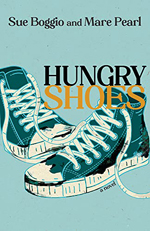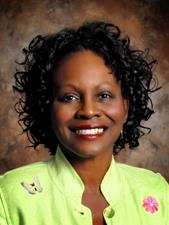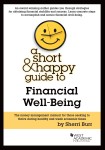Chris Allen and Patricia Walkow are both award-winning authors and editors of fiction and nonfiction who discovered each other’s work as members of Corrales Writing Group. Their individual articles, essays, and short stories have been published in a variety of venues that include newspaper columns and anthologies. Chris and Pat’s first novel collaboration is Alchemy’s Reach (2023), a murder mystery with a touch of romance. You’ll find Chris on Facebook and her SWW author page. Look for Pat on PatriciaWalkow.com, Facebook, and her Amazon author page. For more about Pat’s work, read her 2016, 2020, and 2023 interviews for SouthWest Writers.
 What is your elevator pitch for Alchemy’s Reach?
What is your elevator pitch for Alchemy’s Reach?
Detective Jennifer Murphy’s life is torn asunder when lightning splits the sky and a rifle shot splits the air. Only her dog, Fi, understands what happened.
What formed first in your minds that grew into the story idea: a character, a setting, a what-if question? How did you proceed from there?
The idea for Alchemy’s Reach came from a true event, a mass murder, that happened in southeastern New Mexico in 1885. We set our story in the present day in that setting and created characters that had ties to that prior event. A strong female character and giving the reader a sense of place were important to us. Our main character, Jennifer Murphy, is a deputy sheriff in Lincoln County where she lives on a ranch of rolling hills she and her younger brother, Ethan, inherited from their parents. We wanted the reader to understand how independent Jennifer is, how competent she is. We also wanted to highlight the sights, scents, and sounds of Lincoln County.
You two have collaborated before on writing projects. How did you divide the responsibilities of writing/producing this book? What was the greatest challenge in the collaboration process?
We previously collaborated to write short stories with both current and previous members of the Corrales Writing Group. Each of those stories has been published. Alchemy’s Reach is the first time it was just the two of us.
As with any collaborative effort, it is important for all parties involved to be committed to the project. It means working to reach common ground regarding what the story is about. Although we did not have major differences regarding our story in Alchemy’s Reach, we learned to give a little, get a little, and in the end, create a third voice that belongs neither solely to Pat nor to Chris.
As we discussed our story, one of us would volunteer to write a part, and the following week we’d review it, revise it, and then assign the next chapter. Sometimes one person wrote several chapters in a row; sometimes we simply wrote one at a time. There is also administrivia involved when authoring a book. For example, Pat developed a timeline for the story; Chris kept the character sketches up-to-date. Regarding research of the physical location or anything else related to our story, we would decide who would do what. It was pretty painless, but that goes back to our agreeing on what the book was about in the first place.
How did the book come together?
It took us about two years to write the book, mostly during the pandemic. We presented each chapter to our critique group — the Corrales Writing Group — for review and revision. Often, this was accomplished by Zoom. We edited the book ourselves multiple times by reading it as well as having the computer read it to us. We sent the book to five or six beta readers for their comments and suggestions.
We have both published through KDP but were each involved in other writing projects, so we decided to seek a publisher. We received two publishing offers and decided to go with a vanity publisher, which was a mistake. The chosen publisher provided the cover art and did some additional editing. We thought that though it cost some money, it would free us to attend to our new projects. We signed a contract with Austin Macauley for an e-book, paperback, and audiobook, and the audiobook is still pending. Not all the reviews we read about this company were positive, yet not all were negative. We took a chance. With our own experience publishing books, we learned we are far better at it than the publisher we chose, and we will not choose that route again.
Tell us about the main characters in Alchemy’s Reach.
Jennifer Murphy: Co-owner of Montaña Vista Ranch and Deputy Sheriff of Lincoln County, New Mexico. She is our main character. Loves both her job and the ranch. Ethan Murphy: Younger brother of Jennifer Murphy; co-owns the ranch, does not like ranch life; takes odd, dangerous jobs away from home. Pablo Baca: Ranch manager, hired long ago by Jennifer and Ethan’s father. Pablo has known Jennifer and Ethan since they were born. Rose Baldwin: Office administrator for the Lincoln County Sheriff’s Office. She has been like a second mother to Jennifer and Ethan all their lives. Fi: A black Labrador Retriever. Ever faithful. Belongs to her and Ethan…but mostly, Ethan. Jeff Reynolds: Owner of the local hangout (bar and restaurant) called The Rusty Keg. Sheriff Cooper: Jennifer’s boss and sheriff of Lincoln County. Detective David Chino: Mescalero Apache and New Mexico State Police Detective. Joe Stern: Klamath Native American and friend of Ethan.
Why did you choose New Mexico as the setting for the book?
The inspiring event occurred in New Mexico, and since it is such an exotic and beautiful state, we chose to set the story here. The mass murder that occurred at Bonito City provided us with some background genealogy for our main character, Jennifer Murphy, and her brother. In Alchemy’s Reach, the fictional town of Alchemy was flooded when Lake Fortuna was built. In real life, Bonito City was drowned when Bonito Lake was created. The lake still exists today, and it has recently been dredged, removing years of silt.
What was your favorite part of putting this project together?
We worked well together, and the discussions of character and plot inspired each of us to be more creative. Building on each other’s ideas led to improved scene development, better character development, and twists in the plot which, as individuals, we may not have thought about. No matter what problem we encountered, talking it out and coming up with alternatives always worked.
What kinds of scenes did you find most difficult to write?
Chris: Really none posed any issues.
Pat: No type of scene presented a problem. As always, we had to ensure we were consistent with what came earlier in the book. An example of that would be: how come my character has blonde hair in Chapter 1 and all of a sudden, we are saying she has black hair in Chapter 26?
What is the best encouragement or advice you’ve received in your writing journey?
The input from Corrales Writing Group has been invaluable. Even if we don’t feel a specific critique is appropriate for our styles, we find the members’ comments often spur us to review our work and make it better.
What writing projects are you working on now?
Pat: I’ve sent my novel-in-progress, The Far Moist End of the Earth, to beta readers.
Chris: I am currently working on two books, both science fiction, with my husband Paul Knight. One book, The Music of Creation, is out for review by a publisher. The other, The Mirror of Eternity, is going through the critique process with Corrales Writing Group.
 KL Wagoner (writing as Cate Macabe) is the author of This New Mountain: a memoir of AJ Jackson, private investigator, repossessor, and grandmother. Kat has a speculative fiction blog at klwagoner.com and writes about memoir at ThisNewMountain.com.
KL Wagoner (writing as Cate Macabe) is the author of This New Mountain: a memoir of AJ Jackson, private investigator, repossessor, and grandmother. Kat has a speculative fiction blog at klwagoner.com and writes about memoir at ThisNewMountain.com.



 Su Lierz writes dark fiction, short story fiction, and personal essays. Her short story “Twelve Days in April,” written under the pen name Laney Payne, appeared in the 2018 SouthWest Writers Sage Anthology. Su was a finalist in the 2017 and 2018 Albuquerque Museum Authors Festival Writing Contest. She lives in Corrales, New Mexico, with her husband Dennis.
Su Lierz writes dark fiction, short story fiction, and personal essays. Her short story “Twelve Days in April,” written under the pen name Laney Payne, appeared in the 2018 SouthWest Writers Sage Anthology. Su was a finalist in the 2017 and 2018 Albuquerque Museum Authors Festival Writing Contest. She lives in Corrales, New Mexico, with her husband Dennis.

